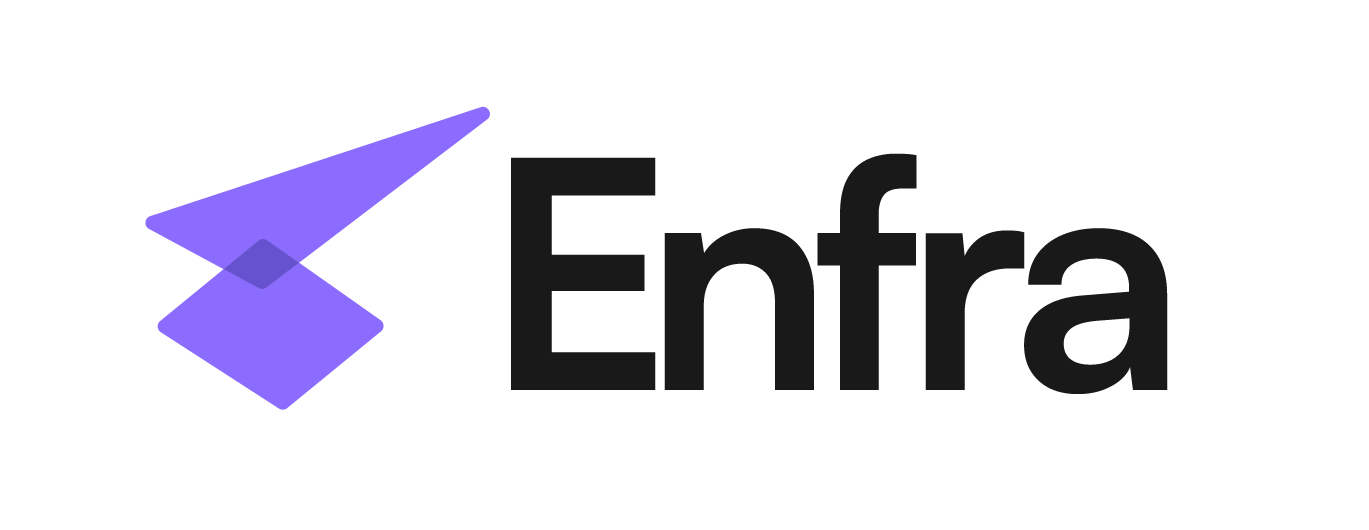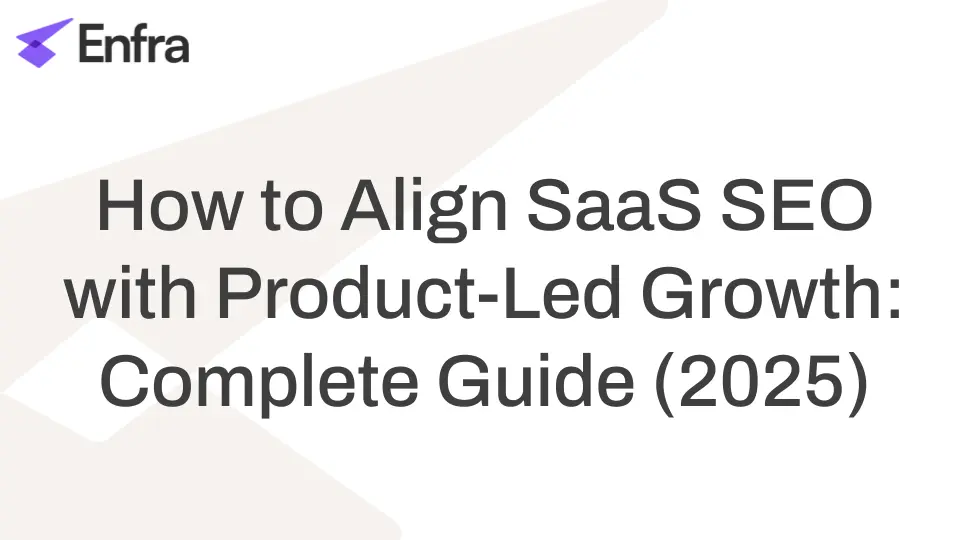Table of Contents
- Understanding SaaS SEO in Product-Led Growth
- Key Components of PLG-Aligned SEO Strategy
- User Intent Mapping
- Product-Led Content Creation
- Technical SEO Optimization
- Building a Sustainable SEO Framework
- Value-Driven Content Strategy
- Product Feature Optimization
- User Experience Metrics
- Implementing SEO for Different PLG Stages
- Acquisition Phase
- Activation Phase
- Retention Phase
- Measuring Success and KPIs
- SEO Performance Metrics
- Product Adoption Metrics
- Revenue Impact
- Advanced PLG-SEO Integration
- Self-Service Content Strategy
- Feature-Led Keywords
- User-Generated Content
- Common Challenges and Solutions
- Balancing SEO with Product Focus
- Content Scalability
- Technical Implementation
- Future-Proofing Your PLG SEO Strategy
- FAQ
Understanding SaaS SEO in Product-Led Growth
In a product-led growth (PLG) environment, SaaS SEO emphasizes user activation rather than merely increasing visitor numbers. When users search for solutions, they should immediately come across your product and discover how to use it.
PLG shifts the focus of SaaS SEO from broad industry terms to keywords that facilitate self-service discovery and activation. Instead of targeting “best project management software,” a PLG strategy might focus on “free project management template” or “project timeline creator,” directing users to features they can try instantly.
This approach requires rethinking content and conversion paths to support users eager to try the product independently. The goal is to create user paths that lead to immediate product use, converting search visitors into active users.
Key Components of PLG-Aligned SEO Strategy
- First, understand user intent. Go beyond search volumes to comprehend why people search and how it leads them to your product. However, the interesting thing is that whenever there’s significant demand in the market, the monthly search volume for those keywords automatically go up
- Next, create content that showcases your product. Interactive demo tools that help insert working pieces of your product on landing pages & blog pages work very well here. Some of the interesting ones are Storylane, Navattic and Supademo. Instead of generic guides, show how your product solves specific problems. For example, if you offer a AI SEO tool for B2B SaaS, include interactive demos to show how users can get relevant commercial-intent keywords in seconds instead of weeks.
- Finally, optimize the technical side to facilitate a seamless transition from search results to product usage. Enhance loading speeds, ensure mobile compatibility, and create a clean path from search to product usage. Meta descriptions should highlight clear benefits, such as “Start publishing blog posts in 2 minutes.”
These elements work together to guide users from search to product use, maintaining consistency with user intent, content, and product experience.
Building a Sustainable PLG SaaS SEO Framework
To build a sustainable PLG SEO framework for your SaaS product, focus on valuable content, freely usable features, and user experience metrics.
Valuable content addresses user problems while highlighting your product’s solutions. Instead of generic “how-to” articles, create content that naturally incorporates your product’s features. For instance, if you offer project management software, write about specific workflow challenges and demonstrate how your tool resolves them.
Freely usable features act like fishing nets, bringing users into the fold and showing them the value of the product.
Feature optimization involves aligning feature pages with user search queries. Each page should target specific keywords that match user searches for solutions. Use clear, benefit-focused headlines and provide technical details that search engines can easily read.
User experience metrics measure how well your PLG SEO efforts lead to product adoption. Track metrics like:
- Time from first visit to product signup
- Paths from blog posts to feature pages
- Usage of public free tools
- Bounce rates on key landing pages
Regularly review these elements to ensure they meet your goals. Update content based on feedback, adjust feature pages as your product evolves, and refine your site structure to maintain a clear path to value for new users.
Implementing SEO for Different PLG SaaS Stages
Aligning SaaS SEO with Product-Led Growth involves different strategies for each stage of the user journey:
Acquisition Phase
Focus on keywords that match the problem-awareness stage. Create educational content that naturally leads users to try your product. For example, if you sell analytics software, write about “how to track website performance” instead of just listing product features.
Activation Phase
Target searches where users explore solutions. Your content should highlight quick wins and key benefits users can achieve with your product. Create landing pages that show specific use cases and feature comparisons that users search for before choosing a solution.
Retention Phase
Use long-tail keywords related to advanced features and specific use cases. Develop a knowledge base for existing users looking for advanced functionality. Include:
- Advanced tutorials
- Integration guides
- API documentation
- Customer success stories
Each stage should have its own keywords and content types, creating a smooth journey from discovery to active use. The goal is to match search intent with the right stage of the user journey.
Measuring Success and KPIs
Tracking the right metrics ensures your PLG-focused SaaS SEO strategy delivers results:
SEO Performance Metrics
- Growth in organic traffic to product pages
- Keyword rankings for product-led terms
- Click-through rates from search results
- Time on page for feature documentation
- Bounce rates on free trial landing pages
Product Adoption Metrics
- Free trial signups from organic search
- Feature activation rates from SEO traffic
- Time to first value for organic visitors
- User engagement scores by landing page
- Self-service conversion rates
Revenue Impact
- Customer Acquisition Cost (CAC) from organic search
- Lifetime Value (LTV) of SEO-acquired users
- Revenue from organic traffic
- Upgrade rates from free to paid plans
- Expansion revenue from existing customers
Create dashboards that combine these metrics to see how SEO affects product adoption and revenue. Focus on metrics showing immediate impact (like signup rates) and long-term value (like customer lifetime value). Regular analysis helps identify which content and keywords drive valuable user behaviors.
The most important metrics align with your product’s growth goals and user journey.
Advanced PLG-SEO Integration
Product-led growth requires a sophisticated SEO approach beyond just keywords:
Self-Service Content Strategy
Create content that empowers users to solve problems independently. Focus on guides, video tutorials, and interactive documents that answer specific questions. This content should reflect your product’s self-service model.
Feature-Led Keywords
Use keywords that match specific product features. Instead of broad terms, aim for searches that show clear intent. For example, use “automated invoice matching software” instead of “accounting software.”
User-Generated Content
Leverage customer stories, reviews, and community interactions to create SEO-friendly content. Encourage users to share their experiences, generating authentic content that ranks for specific searches. Build a knowledge base that grows with user input.
This approach ensures your SEO supports the product-led journey. Each content piece should rank well and guide users toward using your product. The goal is not just traffic, but creating paths that lead to product use.
Common Challenges and Solutions
Aligning SaaS SEO with product-led growth presents several challenges:
Balancing SEO with Product Focus
Many companies struggle to maintain strong SEO while focusing on their product. The solution is to create content clusters that naturally lead to product features. Instead of forcing product mentions, build content that solves user problems and demonstrates your product’s value.
Content Scalability
As your product grows, scaling content can be challenging. Address this by:
- Creating templates for different content types
- Building modular content that’s easy to update
- Using product documentation as SEO content
- Leveraging user feedback for content ideas
Technical Implementation
Technical SEO often clashes with product development priorities. Solve this by:
- Setting up clear documentation for developers
- Creating SEO checklists for product updates
- Implementing automated SEO monitoring
- Establishing communication channels between SEO and product teams
The key to overcoming these challenges is integration. Make SEO part of your product development process. This ensures both initiatives support each other while focusing on user value and product growth.
Future-Proofing Your PLG SEO Strategy
As we move through 2025, keep your PLG SEO strategy robust by adapting to new trends while adhering to core principles:
AI-Ready Content Structure
Organize your content for AI search engines. Use schema markup and clear hierarchies to help AI grasp your product’s value and use cases.
Voice Search Optimization
Adjust your keywords for conversational searches. More users ask product questions through voice search, so natural language optimization is key for PLG success.
Product Analytics Integration
Link SEO data with product usage. This helps you see which users become power users, allowing better content optimization for valuable customer acquisition.
Mobile-First Experience
Ensure your product documentation and SEO content perform well on mobile. With mobile use leading in search, your content must be easy to read on small screens.
User Intent Evolution
Keep up with changes in search intent. As users become more sophisticated, their search patterns evolve. Regular analysis helps maintain SEO effectiveness.
Future-proofing isn’t about predicting every change but building systems that adapt quickly. Keep your SEO foundation strong while staying flexible to embrace new opportunities in the PLG landscape.
FAQ
Q: How long does it take to see results from a PLG-aligned SEO strategy?
A: Initial results typically appear in 4-6 months, with significant progress in 8-12 months. Focus on early wins with product-specific long-tail keywords.
Q: Should I prioritize product features or SEO content first?
A: Start with your core product features, then create SEO content around them. Let your product’s value guide your content.
Q: How do I measure the success of PLG SEO?
A: Track product-specific metrics like feature adoption rates, along with traditional SEO metrics. Key indicators include organic sign-ups, feature activation rates from organic traffic, and time-to-value for SEO-acquired users.
Q: Can PLG work without heavy investment in SEO?
A: Yes, but SEO greatly boosts PLG results. While word-of-mouth can drive growth, SEO ensures steady user acquisition and helps scale effectively.
Q: How often should I update my PLG SEO strategy?
A: Review it every quarter, update content monthly, and adjust technical elements as needed. Update content immediately after product changes.
Q: What’s the biggest mistake in PLG SEO?
A: Focusing too much on general SaaS keywords instead of product-specific terms that match user intent and product features.


Leave a Reply